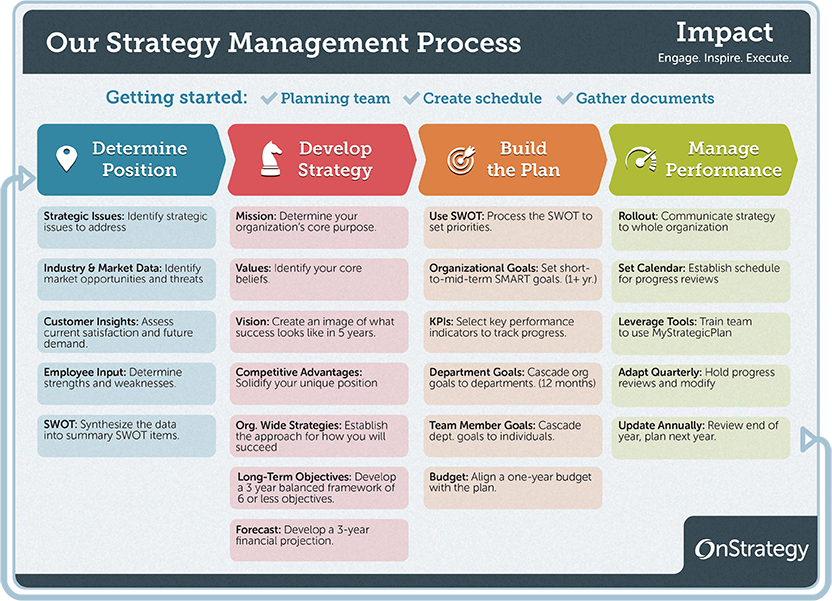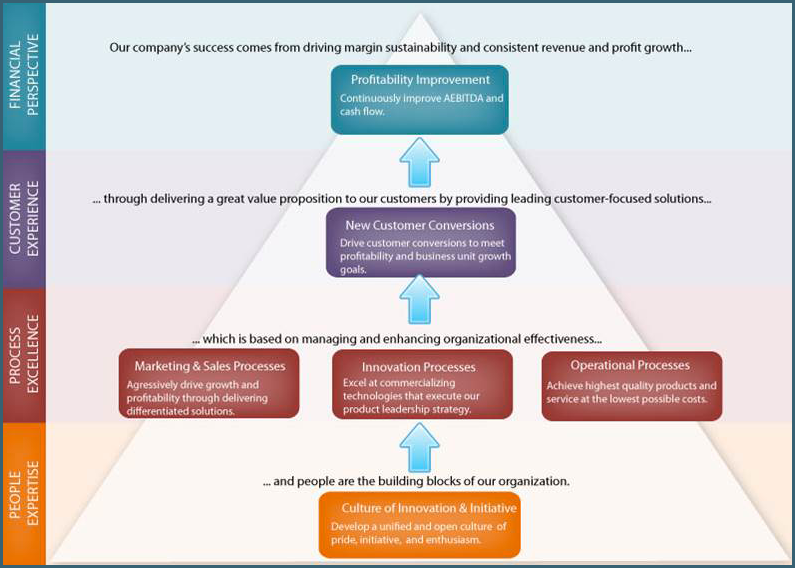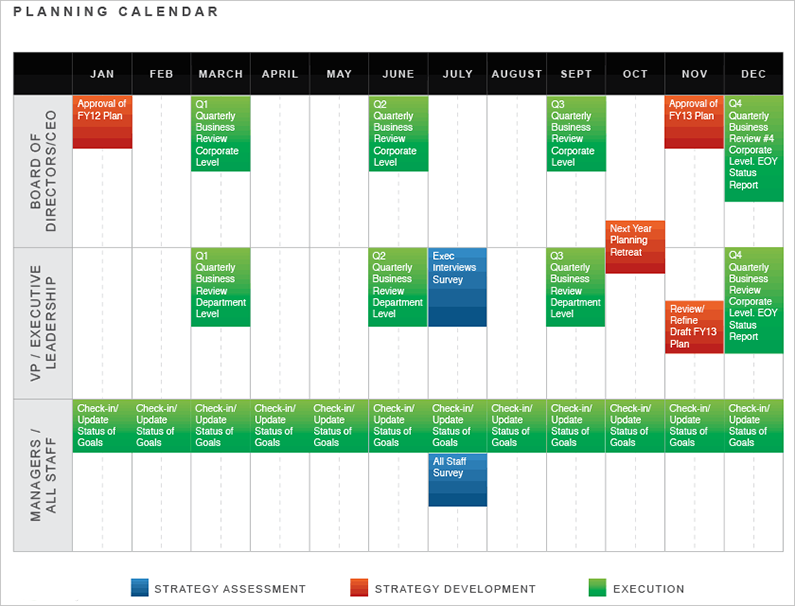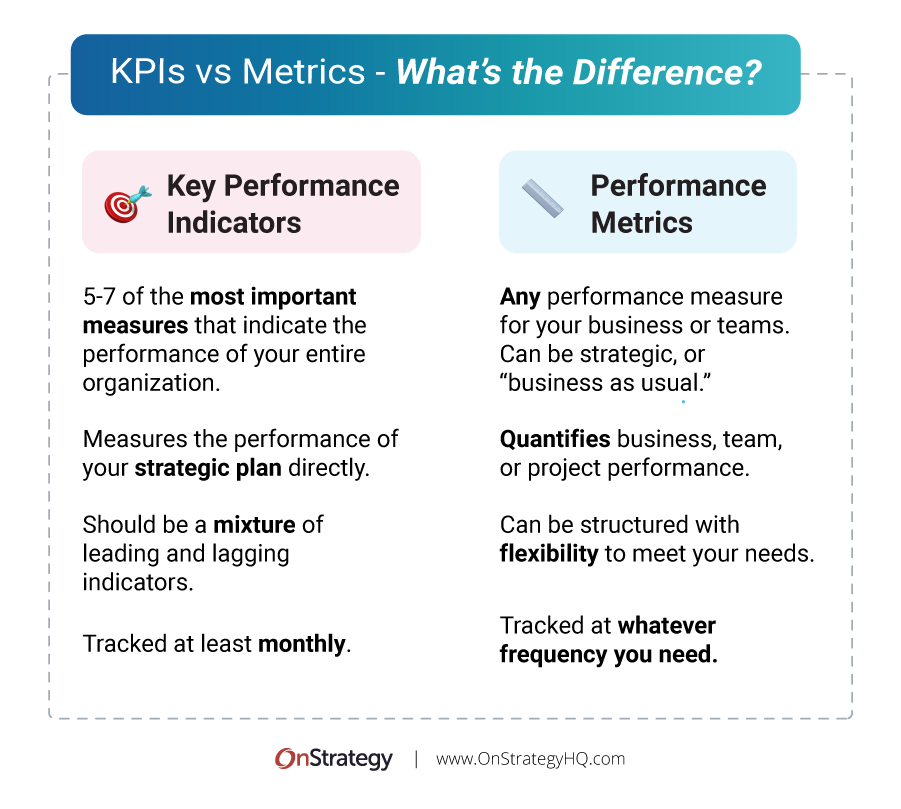The Strategic Planning Process in 4 Steps To help you throughout our strategic planning framework, we have created a how-to guide on the basics of a strategic plan, which we will take you through step-by-step. Free Strategic Planning Guide...
The Strategic Planning Process in 4 Steps
To help you throughout our strategic planning framework, we have created a how-to guide on the basics of a strategic plan, which we will take you through step-by-step.
What is Strategic Planning?
Strategic Planning is when organizations define a bold vision and create a plan with objectives and goals to reach that future. A great strategic plan defines where your organization is going, how you’ll win, who must do what, and how you’ll review and adapt your strategy development.
Overview of the Strategic Planning Process:
The strategic management process involves taking your organization on a journey from point A (where you are today) to point B (your vision of the future).
Part of that journey is the strategy built during strategic planning, and part of it is execution during the strategic management process. A good strategic plan dictates “how” you travel the selected road.
Effective execution ensures you are reviewing, refreshing, and recalibrating your strategy to reach your destination. The planning process should take no longer than 90 days. But, move at a pace that works best for you and your team and leverage this as a resource.
To kick this process off, we recommend 1-2 weeks (1-hour meeting with the Owner/CEO, Strategy Director, and Facilitator (if necessary) to discuss the information collected and direction for continued planning.)

Questions to Ask:
Who is on your Planning Team? What senior leadership members and key stakeholders are included? Checkout these links you need help finding a strategic planning consultant, someone to facilitate strategic planning, or expert AI strategy consulting. Who will be the business process owner (Strategy Director) of planning in your organization? Fast forward 12 months from now, what do you want to see differently in your organization as a result of your strategic plan and implementation?Outcome:
Planning team members are informed of their roles and responsibilities. A strategic planning schedule is established. Existing planning information and secondary data collected.Action Grid:
| Determine organizational readiness | Owner/CEO, Strategy Director | Readiness assessment | |
| Establish your planning team and schedule | Owner/CEO, Strategy Leader | Kick-Off Meeting: 1 hr | |
| Collect and review information to help make the upcoming strategic decisions | Planning Team and Executive Team | Data Review Meeting: 2 h |
Step 1: Determine Organizational Readiness
Set up your plan for success – questions to ask:
Are the conditions and criteria for successful planning in place at the current time? Can certain pitfalls be avoided? Is this the appropriate time for your organization to initiate a planning process? Yes or no? If no, where do you go from here?Step 2: Develop Your Team & Schedule
Who is going to be on your planning team? You need to choose someone to oversee the strategy implementation (Chief Strategy Officer or Strategy Director) and strategic management of your plan? You need some of the key individuals and decision makers for this team. It should be a small group of approximately 12-15 people.
OnStrategy is the leader in strategic planning and performance management. Our cloud-based software and hands-on services closes the gap between strategy and execution. Learn more about OnStrategy here.



























![Change Is Certain, Our Leadership Is Not [6 Essentials of Leading Amidst Change.]](https://54493.fs1.hubspotusercontent-na1.net/hubfs/54493/Newsletter-images/images/bridges-transition-model.png)

![5 Unproductive Listening Patterns [And How to Avoid Them]](https://i.ytimg.com/vi/seZV8o1qUIE/maxresdefault.jpg)






